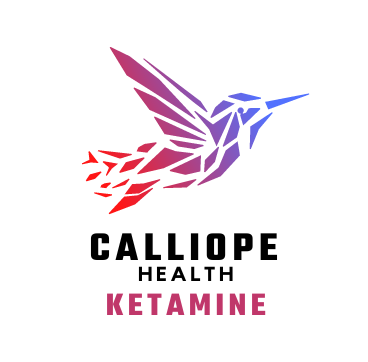Ketamine assisted therapy is an advanced treatment for depression and anxiety. Ketamine is widely used anesthetic in medical treatment and is most commonly known for its uses in surgery or for pain management. At high doses, ketamine puts you to sleep and completely disconnects your conscious awareness from physical sensations, without affecting the cardiovascular or respiratory systems. For this reason, ketamine is used in pediatric medicine and in emergency settings because of its extremely high safety profile. Ketamine is on the World Health Organization’s list of “essential medicines.”
Why is ketamine being used in psychiatry?
In the 2000s it was discovered that ketamine has the amazing property of rapidly switching off a depressed physiological state.

This depression-reversing power of ketamine can be achieved at doses much lower than full anesthesia. Time Magazine called ketamine the “anti-anti-depressant,” because unlike typical antidepressants like SSRIs or SNRIs (Zoloft, Paxil, Wellbutrin, Lexapro, etc.), ketamine works immediately and is often not needed chronically.

How does ketamine assisted therapy work?
Ketamine assisted therapy takes place after you have received a dose of ketamine in our office. There are several different routes of administration for ketamine, including intravenous (IV), sublingual, intramuscular (IM), and intranasal (ISIM).
IV ketamine treatment for depression involves the administration of ketamine through a vein using a small IV catheter. This route of administration allows the medication to be quickly absorbed into the bloodstream and reach the brain. The higher doses of ketamine associated with IV ketamine treatment make it unsuitable for talk therapy during or after dosing.
Non-ordinary states of consciousness (NOSC) during ketamine assisted therapy
Non-ordinary states of consciousness (NOSC) that occur during a psychedelic journey, such as those induced by substances like ketamine, can lead to a temporary alteration in your state of consciousness and perception. This change in perception and consciousness can lead to a “break” from your typical patterns of thinking and behaving, which may allow you to approach your thoughts and feelings in a different way.
In the context of psychotherapy, this temporary alteration in consciousness may facilitate the process of exploring and addressing deep-seated emotional issues. Some research has suggested that the use of psychedelics in conjunction with psychotherapy may lead to rapid and enduring changes in emotional well-being, including reduced symptoms of anxiety and depression.
Sublingual, intramuscular, and intranasal are the routes of administration most typically used for ketamine assisted therapy. Rectal suppository is a less common, but sometimes advantageous, route that works just as well.
Sublingual ketamine involves placing a dose of ketamine under the tongue, where it is absorbed through the mucous membranes. This route of administration may be less invasive than IV administration, but the absorption of the medication may be slower and less predictable.
Intramuscular ketamine involves injecting the medication into a muscle, such as the buttocks or upper arm. This route of administration is often preferred for ketamine assisted therapy if individuals are prepared for the relatively rapid onset of the medicine.
Intranasal ketamine involves administering the medication through the nostrils as a spray. This route of administration may be less invasive than IV or IM administration, but the absorption of the medication may be slower and less predictable. Learn about Ketamine vs Esketamine (Spravato)

At Calliope Health Ketamine we find the best results from ketamine assisted therapy come from having a roadmap to understand and work with the non ordinary states of consciousness that arise during a session. Internal Family Systems Therapy (IFS) is the primary modality we use to help teach you how to relate to the states of mind you may experience with curiosity, compassion, courage, clarity, and calmness. By learning how to treat each part of you with respect and curiosity, we find that clients are more able to expand the benefits of each ketamine journey by working with parts of them that emerged during the session, on their own without ketamine.

How to learn more about Internal Family Systems (IFS) Therapy
By learning a little bit about IFS and its groundbreaking model of the psyche called natural multiplicity—which fits like a glove into any psychedelic-spiritual journey–you can jumpstart your treatment. We recommend that you take advantage of these three easy ways to learn IFS, prior to your first ketamine assisted therapy session at Calliope:
- Take Keith Miller’s Quickstart Guide to IFS in 30-Minutes webinar
- Read or listen to Richard Schwartz’s book No Bad Parts (the Audible version has amazing recordings of Dick leading you through your first IFS experience, which we recommend over simply reading about IFS)
- Listen to Keith Miller interview Richard Schwartz, one of Dick’s most succinct summaries of the revolutionary structure of the IFS model
In summary, ketamine is now considered to be the most effective and aggressive form of psychiatric treatment legally available for depression, and its related complications.
Using ketamine in Calliope Health’s ketamine assisted therapy program gives you a chance to prepare for the extraordinary window of neuroplasticity you may experience. Our goal is to help you help ketamine do its job of accelerating the reprocessing of negative and depressive thinking in a significant way.

Ketamine is not a miracle cure and requires a commitment to using all the tools of healing–including IFS’s mindfulness-based self-inquiry skills–to capture and expand upon its profound benefits.
We look forward to hearing from you to start your ketamine assisted therapy journey so that you may start to see yourself in an entirely new, compassionate, and healing light.

